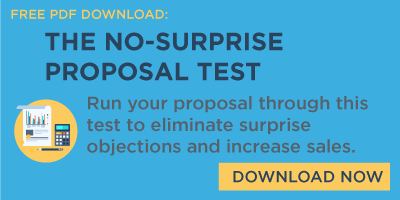
There are two poisonous mistakes that will kill a presentation: using jargon and using stock phrases.
Making either of these mistakes will drastically reduce the chance of getting a second meeting with a prospect.
Let's start with HOW NOT to start a presentation and finish with the HOW TO of communicating an engaging proposal.
Stop Using Sales Jargon
Every profession or group has its own language known as jargon, “special words or expressions that are known to that group and is difficult for others to understand.” For example:
- Digital professionals use CPM, CTR, CPA, SEO, SEM, SERP.
- Media professionals use CPP, CPM, GI’s, GRP’s DR, MG, SOV.
- Internet jargon uses shorthand for people in the know, BTW, TTYL, YOLO.
That’s quite an assortment of alphabet soup that’s unintelligible unless you're part of a particular group. The last thing a sales professional should do is use jargon in communicating with a prospect or client. If your presentations are laced with jargon and “stock phrases,” the likelihood of making the sale are slim to none.
Stop Using Stock Phrases in Sales
Bill McGowan, CEO of Clarity Media, believes that the first five seconds are the most critical time of any presentation. They frame the expectation for the client for what is to come. Sadly many presentations consistently use what McGowan calls “five deadly words.” These words drain the “juice” from the presenter and their presentation.
Here are the killer phrase with the five deadly words underlined:
“So I just thought I’d kind of quickly walk you through my presentation.”
- So – is an empty calorie word.
- Just – is a word that implies a half-hearted effort.
- Thought – is a word that implies that’s what to come is good enough and doesn’t show confidence.
- Kind of – are words that, put together, lack strategic conviction.
- Quickly – is a word that signals to the audience that they are most likely going to be bored.
How to Speak in a Sales Presentation
Sales is a transfer of confidence, and your opening sentence should be positive and full of conviction, “Today, I want to share my strategy for a solution to your key marketing challenge.”
From this point on, put on your “storytelling” hat. From the time of cave men drawing pictures on cave walls and troubadours telling stories through songs, storytelling has been central to the human experience and how we make sense of the world.
Wendy Connick says in “Telling a Sales Story”, that one of the most engaging ways of conveying information is through a story. Always be thinking about how to work your facts into a narrative that will resonate with your listener. This is not a “one size fits all” approach. You must know your audience.
The benefits of this approach are many. Research “Sales Storytelling,” and discover what your style is. Experiment with this approach and practice. A presentation delivered like this far surpasses “product pitches” and:
- Engages your listener
- Builds trust and rapport
- Makes data become interesting and relevant
- Transforms beliefs and changes minds
Just say no to jargon and stock phrases, and instead, stay confident of you ability to help the prospect and think “once upon a time.”
Editor's Note: This was originally published on July 25, 2016 and has been updated.




